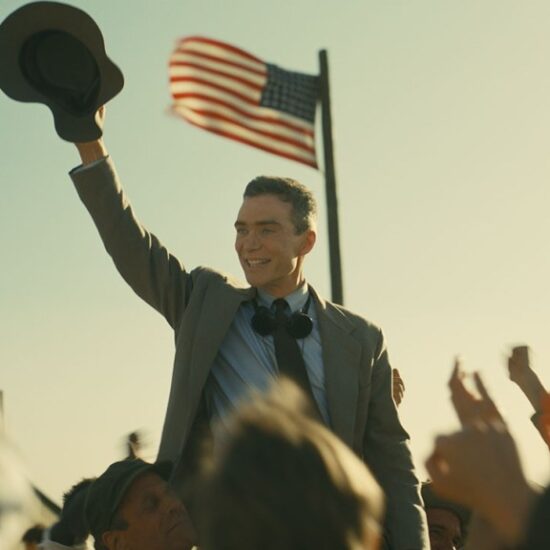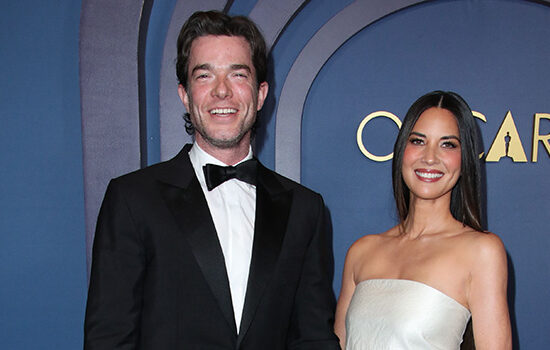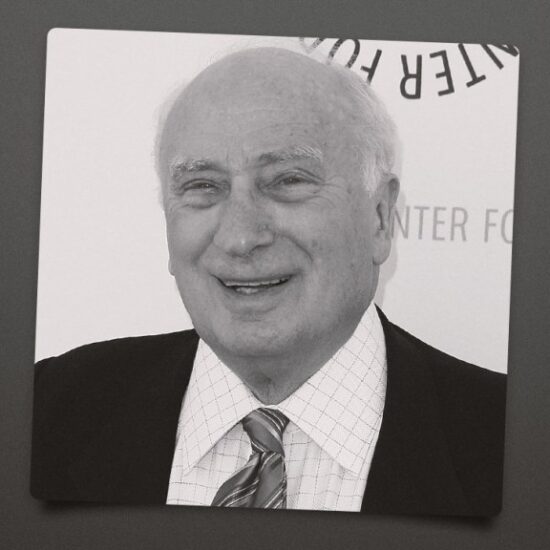
Jean-Luc Godard, the brilliant and polemical Franco-Swiss filmmaker whose work revolutionized cinema, has died. He was 91.
Godard’s death was reported by French newspaper Liberation, which didn’t immediately detail a cause of death.
A former film critic who wrote for the legendary Cahiers du Cinéma during its heyday of the 1950s, Godard emerged onto the scene in 1960 with his seminal debut feature, Breathless, which won the Silver Bear at the Berlin Film Festival.
The Paris-set crime caper, which starred Jean Seberg and Jean-Paul Belmondo, forever changed the course of movies and heralded the arrival of cinematic modernism. Using jump cuts, nods to the camera and other meta-fictional devices, Breathless constantly interrupted and commented on the story as it was happening.
Indeed, Godard’s major contribution to cinema was his idea that a movie was both the story it was telling and the story of the movie itself — how it was made and how the viewer apprehended it. All of Godard’s films were, in a sense, about film.
Throughout a career that spanned more than half a century, Godard directed nearly 70 features, documentaries, shorts and works for television. His oeuvre changed course several times, from his first features offering up sly pop-art homages to Hollywood movies to his overtly political films of the late 1960s and ’70s, to his experiments with video and fragmented narratives in the late ’70s and ’80s, to his autobiographical and historical montage movies of the ’90s and beyond.
Until the end, Godard remained an outspoken polemicist and cinematic innovator, with later works like Film Socialisme (2010) and Goodbye to Language (2014) toying with 3D, camera-phone footage and even subtitles.
Those two movies played in competition at the Cannes Film Festival, where they won the Jury Prize and a Special Palme d’Or, respectively, though Godard never received the fest’s top prize in his lifetime. Nor did he ever win France’s Cesar Award, for which he was nominated twice, while in the U.S., he was awarded an honorary Oscar in 2010.
Famous for his acerbic and political commentary that graced his trove of writings, interviews and news conferences as well as the dialogue and voiceovers of his films, Godard was an outspoken critic of everything from Charles de Gaulle to the Vietnam War to Hollywood to capitalism to filmmakers whose work he tore apart in his reviews or in public — including movies by such contemporaries as fellow French New Wave director Francois Truffaut, with whom he publicly split in the late 1970s.
But Godard was also a caustic and hilarious satirist, filling his movies with scores of puns, witticisms and plain old slapstick. His sense of humor often crossed over into his public persona, where he hid behind tinted eyeglasses and clouds of cigarette or cigar smoke. In his later works, Godard tended to play the role of a deranged left-wing intellectual Groucho Marx, making wisecracks and political statements at will.
Among his many quotable lines, perhaps the most famous comes from a voiceover in his second feature-length film, the stark espionage thriller Le Petit Soldat (1960): “Photography is truth. And the cinema is truth twenty-four times per second.”
Born in Paris on Dec. 3, 1930, Jean-Luc Godard was the son of protestant parents who lived between France and Switzerland, moving permanently to the latter in 1933. His father, Paul Godard, was a physician. His mother, Odile Monod, was the descendant of a famous Swiss pastor and the granddaughter of a wealthy banker close to the French poet Paul Valery, whose writings would later be cited in Godard’s movies.
An athletic child who loved soccer, skiing and basketball — and who would develop a lifelong passion for tennis — Godard was also a poor student who needed three tries to pass his baccalauréat exam. After high school, he enrolled at the Sorbonne in Paris but soon ditched class for the cinemas and movie clubs of the Latin Quarter, where he crossed paths with fellow cinéphiles Truffaut and Jacques Rivette.
The three of them, along with Claude Chabrol and Maurice Scherer (aka Eric Rohmer), began writing for a review called the Gazette du Cinéma. In 1952, Godard published his first articles in the Cahiers du Cinéma, which was founded the previous year. He reviewed Alfred Hitchcock’s Strangers on a Train (1951) and wrote an essay entitled “Defense and Illustration of Classical Découpage” that would serve as a basis for his critical work of the 1950s, including his influential 1956 article “Montage, My Fine Care.”
But Godard was soon ousted from the Cahiers group after robbing the magazine’s cash box and running away to Switzerland, where he would go on to direct the short documentary Operation Beton (1955). The theft was not the first for the young film critic, who was known to be a kleptomaniac, stealing from cafes, the homes of friends and acquaintances and even from his grandfather’s book collection.
Returning to Paris in 1956 after a stint in Swiss television and a stay at a psychiatric hospital in Lausanne, Godard worked for two years as a publicist for 20th Century Fox, writing press material for Hollywood releases in France. He continued to pen reviews for the Cahiers du Cinéma and directed three shorts: All the Boys Are Called Patrick (1957); A Story of Water (1958), co-directed with Truffaut; and Charlotte and Her Boyfriend (1958), the latter featuring Belmondo.
Belmondo would go on to play the snide gangster Michel Poiccard in Godard’s breakthrough debut, Breathless, with Hollywood starlet Jean Seberg portraying his New York Herald Tribune-touting love interest. Based on a scenario by Truffaut (itself based on a true-crime story) and shot in 1959 on an ultra-low budget — the equivalent of $90,000 today — the production suffered from Godard’s constant doubts and mood swings, nearly turning into a disaster. Instead, Breathless became a sensation when it was released the next year, turning its 28-year-old director into a star himself.
The public and critical success of Breathless would mark the triumph of the French New Wave, with Godard’s film joining Truffaut’s The 400 Blows (1959) and Chabrol’s Le Beau Serge (1958) as harbingers of a younger, freer and more irreverent kind of cinema that was a far cry from most of the studio productions being made at the time.
Godard would go on to shoot a slew of movies in Breathless‘ wake, many of them now considered to be his greatest — and probably his most accessible — works. He was also coveted several times by Hollywood during that period and at one point was attached to direct Warren Beatty in Bonnie and Clyde before Arthur Penn took over.
After Le Petit Soldat (eventually released in 1963), he made 15 more features throughout the decade, experimenting with different genres, styles and forms of storytelling. His best ’60s films include the musical menage a trois A Woman Is a Woman (1961), the prostitution drama Vivre Sa Vie (1962), the lush behind-the-scenes tragedy Contempt (1963), the tongue-in-cheek gangster flick Bande a part (1964), the avant garde sci-fi caper Alphaville (1965), the romantic thriller Pierrot le Fou (1965), the verite-style youth movie Masculin Feminin (1966), the banlieue-set study Two or Three Things I Know About Her (1967) and the dark, deconstructed road movie Week-end (1967).
Many of Godard’s early masterpieces starred the Danish-born model-turned-actress Anna Karina, who played the role of Veronica Dreyer in Le Petit Soldat and whom the director went on to marry in 1961. The two would have a prolific if highly tumultuous relationship — some of it fictionalized in Contempt, with Brigitte Bardot standing in for Karina — that ended in divorce in 1965. Two years later, Godard wed the young French actress Anne Wiazemsky, with whom he remained married until 1979.
Wiazemsky, who began her acting career in Robert Bresson’s Au Hasard Balthazar (1966), was first cast by Godard in his Maoist student movie La Chinoise (1967). That film, along with Week-end and the events of May 1968, marked a turning point in the auteur’s work toward his overtly political efforts of the late ’60s and early ’70s. (The transition was fictionalized in Michel Hazanavicius’ 2017 film Godard Mon Amour.)
During that period, Godard joined a band of left-wing activists and filmmakers, including director Jean-Pierre Gorin, to form the Dziga Vertov Group. He signed several features in the name of the collective, notably Wind From the East (1970), Tout va bien (1972) and Letter to Jane (1972). The last two featured American star Jane Fonda, then at the height of her anti-Vietnam War activism.
Godard continued to be prolific throughout the 1970s, though he ceased making purely fictional works and shot a number of documentaries, including two long series for television: the 10-hour Six fois deux in 1976 and the five-hour France/tour/detour/deux/enfants in 1979. He also made an experimental music doc, One + One (1968), which featured the Rolling Stones recording “Sympathy for the Devil” in London.
By the end of the decade, Godard had split with most of his friends from the Cahiers du Cinéma days, going so far as to publicly insult Truffaut in a 1978 interview by claiming he had “no idea how to make movies.” Truffaut responded with a letter telling Godard to keep focused on his next autobiographical movie, which should be called “A Shit Is a Shit.” The glory days of the New Wave were over.
In 1977, Godard moved back to Switzerland, settling into the quiet lakeside city of Rolle with the filmmaker Anne-Marie Miéville, who became his partner after a severe motorcycle accident left the director hospitalized several years earlier. The two would remain in Rolle for the rest of Godard’s life, with the latter’s production company, Sonimage, operating out of the same building in which they lived.
Following a failed effort to make a Bugsy Siegel movie called The Story, with Francis Ford Coppola producing and Diane Keaton attached as one of the leads, Godard reemerged in 1980 with his first fictional work in more than a decade, Every Man for Himself. Starring Isabelle Huppert, Jacques Dutronc and Nathalie Baye, the film utilized a fragmented narrative and extreme slow-motion sequences to portray the lives of three disparately connected characters: a prostitute, a divorcé and his ex-wife.
Premiering in competition in Cannes, Every Man for Himself was hailed by certain critics as a major comeback for Godard and would score more than 600,000 admissions in France, making it his biggest domestic success since the 1960s. It kicked off a new, more spiritual and poetic phase in his oeuvre that would manifest itself in the half-dozen features he shot during the next decade, including Passion (1982), First Name: Carmen (1983), Detective (1985), Hail Mary (1985) and King Lear (1987).
King Lear, which was produced by Hollywood action movie giants Golan-Globus and featured the eclectic cast of Norman Mailer, Molly Ringwald, Woody Allen, theater director Peter Sellars and Godard himself as a madcap character named Professor Pluggy, is exemplary of the kind of dense, difficult, absurd and exquisitely crafted movies he made during the latter half of his life. Critical reception for King Lear, like for most of the auteur’s efforts, was extremely divisive, with The Washington Post condemning Godard’s “utter disregard for a sustained, coherent presentation” of his ideas and the Los Angeles Times claiming it “a work of certified genius.”
The director continued his experiments in fiction throughout the 1990s with movies like the Alain Delon starrer Nouvelle Vague (1990), Gerard Depardieu’s Hélas pour moi (1993) and the Sarajevo-set For Ever Mozart (1996), which were championed by some critics but failed to garner much of a theatrical following.
During that period, Godard also completed a massive 266-minute project entitled Histoire(s) du cinema, which first screened in Cannes in 1988 and was initially broadcast on the French cable network Canal Plus. Composed of interviews, clips from classic films, archive footage and other images edited together in collage-like fashion, the eight-part Histoire(s) revisited both movie history and the turbulent times of the 20th century, crisscrossing the work of Cahiers-championed directors like Howard Hawks and Hitchcock with pivotal events like World War II and the Holocaust.
Histoire(s), though never widely distributed, is now considered a major part of Godard’s filmography. In an interview with the French paper Libération published years after its release, he described the project as “a little like my family photo album — but also that of many others, of all the generations that believed in the dawn. Only the cinema could bring together the ‘I’ and the ‘we.’ ”
The ideas about montage found in Godard’s early critical writings would be put into practice in much of his late work, from the Histoire(s) du cinema to final features like Notre musique (2004), Film socialisme (2010), Goodbye to Language (2014) and The Image Book (2018). Each found the director experimenting with new techniques, including the use of cell phone footage in Film Socialisme and 3D in Goodbye to Language, which Godard distorted into beguiling abstract compositions.
He also became more of a recluse in his later years, refusing to give interviews, accept prizes or travel to major festivals like Cannes. When he was offered the French National Order of Merit, he turned it down with the reply: “I don’t like taking orders, and I don’t have any merits.” And when he was awarded an honorary Oscar in 2010, he refused to travel to Los Angeles to accept it in person. His partner, Mieville, told the media that Godard, then 79, “won’t go to America, he’s getting too old for that kind of thing. Would you go all that way just for a piece of metal?”
The honorary Oscar also sparked a controversy regarding Godard’s alleged anti-Semitism, with journalists and researchers digging up quotes from his past as well as a scene from his 1976 documentary Here and Now in which he juxtaposed images of Golda Meir and Adolf Hitler. In his otherwise laudatory and finely researched 2008 biography Everything Is Cinema: The Working Life of Jean-Luc Godard, longtime New Yorker film critic Richard Brody uncovered other statements about Jews made by the French auteur, which he would never address or apologize for.
Despite his status — self-determined or not — as a cultural pariah, especially from the 1970s onward, Godard would have a vast influence on films and filmmakers throughout the world in the decades following the initial release of Breathless. New Waves that sprang up across the planet, from Brazil to Czechoslovakia to Japan, owed a major debt to him, as did generations of American directors emerging in his wake, including Martin Scorsese, Brian De Palma, Paul Schrader, Peter Bogdanovich and Quentin Tarantino, who named his production company Bande a Part in his honor.
Godard’s experiments with editing, jump cuts, title cards and different shooting formats would also have a major impact on mediums outside of the cinema, including music videos and television commercials. It’s arguable that the collage effects of the earliest videos to appear on MTV in the 1980s, which would influence everything from TV ads to the frenzied, hyper-cut films of Michael Bay, would not exist had Godard not defied traditional notions of narrative and continuity in his work.
In his lyrical and melancholic 1995 autobiographical film, JLG/JLG — Self-Portrait in December, the director, who appeared onscreen ruminating in his Swiss home and wandering along the banks of Lake Geneva, discussed the philosophy that fueled much of his cinema — particularly the notion that his films were, above all, about juxtaposing different concepts, characters, moods, mediums and narrative techniques through the art of montage.
“An image is not strong because it is brutal or fantastic, but because the association of ideas is distant,” he said. “Distant and just.”













